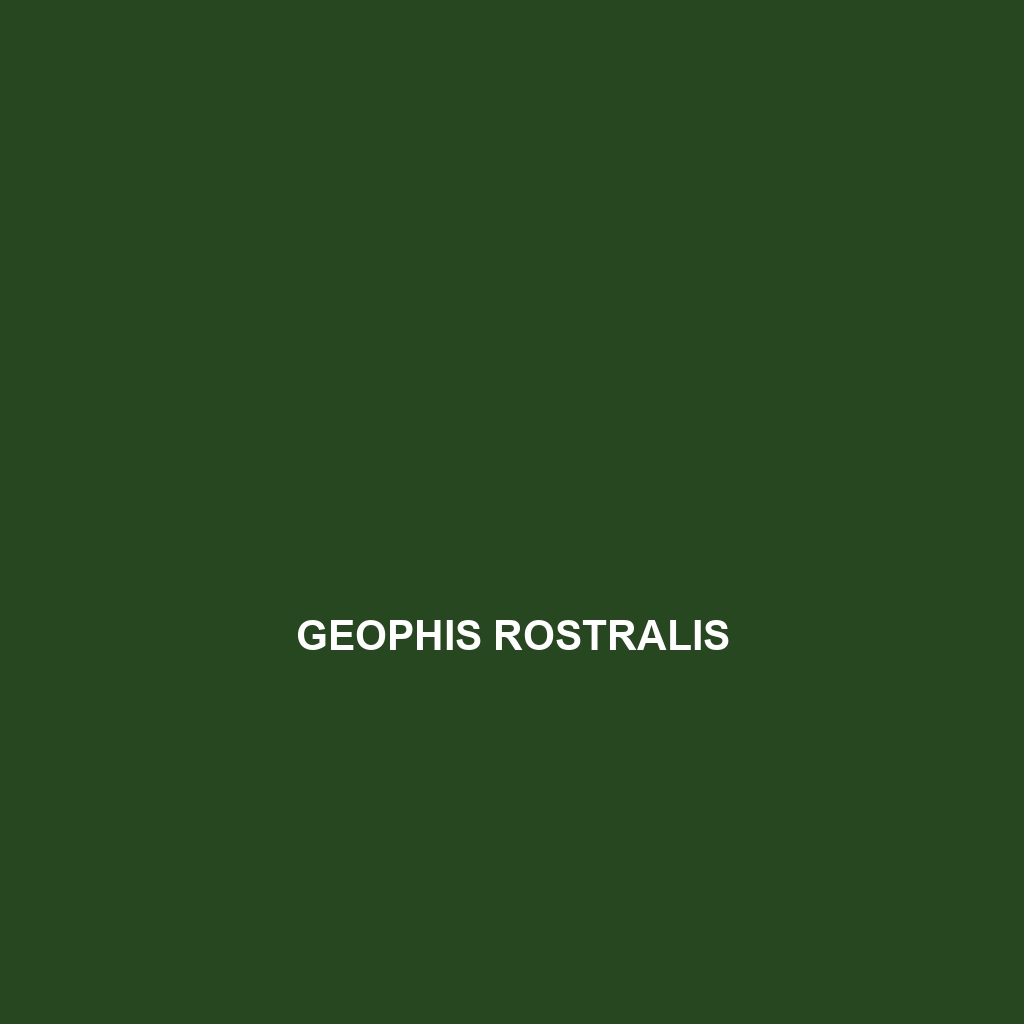Common Name
Geophis rhodogaster
Scientific Name
Geophis rhodogaster
Habitat
Geophis rhodogaster, commonly known as the pink-bellied earth snake, is primarily found in the lush rainforests and temperate forests of Central America, particularly in countries such as Costa Rica and Panama. This species thrives in humid environments with ample vegetation, often residing in leaf litter, under logs, and among roots. It is adapted to both lowland and mountainous regions, usually between altitudes of 200 to 1,500 meters. The microhabitats created by the dense foliage and organic debris provide perfect conditions for this secretive snake, allowing it to escape from predators while hunting for food. The climate in these regions supports high humidity levels, consistent rainfall, and a stable temperature, making it ideal for the survival of Geophis rhodogaster.
Physical Characteristics
Geophis rhodogaster is a relatively small snake, typically measuring between 40 to 60 cm in length. Its most remarkable feature is its vibrant pink to reddish underbelly, which contrasts sharply with its dark or brownish dorsal coloration. This coloration serves both camouflage and social signaling purposes. The snake’s body is slender and elongated, with smooth scales that enhance its burrowing abilities. Furthermore, its large, round eyes offer good vision during its nocturnal activities. Juveniles of Geophis rhodogaster exhibit lighter coloration, which darkens as they mature.
Behavior
The behavior of Geophis rhodogaster is intriguing, particularly its nocturnal tendencies. This snake is primarily active at night, utilizing its keen sense of smell and vision to navigate its environment. During the day, it prefers to remain hidden, relying on its coloration for concealment in leaf litter. Mating rituals take place during the rainy season, where males often engage in combat to vie for access to females. This species is also known for its burrowing behavior; it can dig through the soft soil to escape threats and search for prey. While generally solitary, these snakes are known to encounter each other during the breeding season.
Diet
Geophis rhodogaster is primarily an insectivore, feeding on a diet that mainly consists of soft-bodied invertebrates such as earthworms, slugs, and various insects. This diet is critical for their growth and reproductive success. The snake employs a method of constriction to subdue its prey before consumption. Its foraging activities are generally low-energy, given the abundance of food sources in its rainforest habitat. This efficient feeding strategy enables the pink-bellied earth snake to thrive within its ecological niche.
Reproduction
The reproductive cycle of Geophis rhodogaster typically occurs during the rainy season, which provides optimal conditions for the survival of offspring. Mating usually takes place in late spring to early summer, and females lay 2 to 5 eggs, usually in moist, subterranean locations. The gestation period lasts about 2 to 3 months. Upon hatching, the young snakes are about 15 to 20 cm long and are independent from birth. Female Geophis rhodogaster exhibit no parental care, which is typical for many snake species.
Conservation Status
Currently, Geophis rhodogaster is classified as a species of least concern by the IUCN (International Union for Conservation of Nature). However, this status does not negate the potential threats it faces, particularly habitat destruction due to deforestation for agriculture and urban development. Conservation efforts are crucial to maintaining the natural habitats that support this species, ensuring that they remain a vital part of their ecosystems.
Interesting Facts
One interesting fact about Geophis rhodogaster is its unique method of camouflage, employing its coloration not only to blend in with the rainforest floor but also to signal to potential mates during the breeding season. Additionally, this species has a remarkable ability to burrow efficiently, often creating small tunnels that serve as both hunting grounds and refuges from predators. Its adaptability to different microhabitats within the rainforest is also noteworthy, showcasing the species’ resilience.
Role in Ecosystem
Geophis rhodogaster plays a vital role in its ecosystem as both a predator and prey species. By consuming a variety of invertebrates, it helps regulate insect populations, contributing to overall ecosystem health. Additionally, it serves as a food source for larger predators within its habitat, including birds of prey and other reptiles. As a successful burrowing snake, Geophis rhodogaster also aids in soil aeration and nutrient distribution, enhancing the quality of its habitat and promoting plant growth, which further supports the complex interrelationships found within the rainforest ecosystem.
